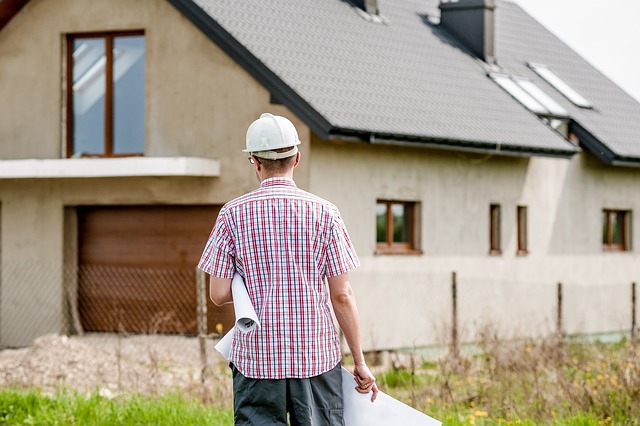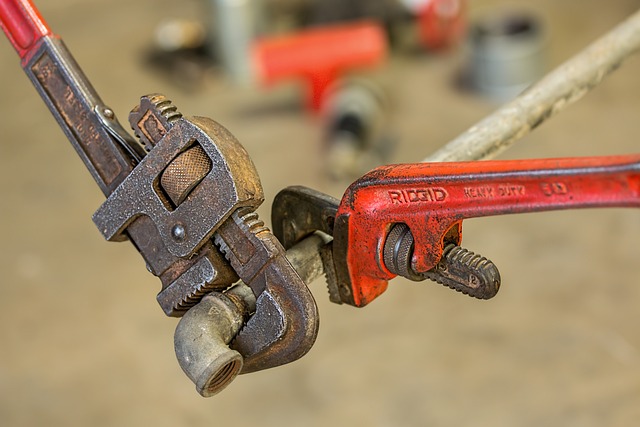When updating or fixing your home appliances, it's crucial to strictly follow installation manuals and safety protocols to ensure household safety and prolong appliance life. Proper installation by adhering to manufacturer guidelines protects against potential hazards and guarantees optimal performance. This includes considerate placement for ventilation and access in the case of a refrigerator, as well as precautions like insulating water lines to prevent freezing. Regular maintenance checks are key to preventing issues; these include inspecting seals, cleaning filters, and verifying electrical connections. Homeowners should be proactive with home repair and maintenance to catch problems early, potentially saving on future repairs or replacements. The text also outlines a systematic approach for troubleshooting common appliance malfunctions, from simple power checks to complex issues involving electrical components or gas lines, which necessitate professional intervention for safe resolution. Engaging expert professionals for intricate repairs is essential for safeguarding your home and ensuring the continued efficiency of your appliances, ultimately saving time, money, and resources in the long run. Regular professional maintenance is also recommended for addressing minor issues before they escalate, thus preserving the longevity and functionality of your appliance investments.
Navigating the intricacies of home repair and maintenance often leads to encounters with appliance installation and repairs. This comprehensive guide delves into the essentials of safe appliance setup, offers a detailed step-by-step on troubleshooting common household appliance issues, and outlines scenarios where professional intervention is crucial. Whether you’re tackling DIY fixes or assessing when to call in the experts for complex repairs, this article equips you with the knowledge to maintain your home’s functionality and safety.
- Understanding the Essentials of Home Appliance Installation and Safety Protocols
- Troubleshooting Common Issues in Household Appliances: A Step-by-Step Guide for DIY Repairs
- When to Call a Professional: Expert Services for Complex Appliance Repair Needs
Understanding the Essentials of Home Appliance Installation and Safety Protocols

When integrating new home appliances or performing repairs, adherence to installation protocols and safety measures is paramount to ensure the well-being of your household and the longevity of your investment. Proper installation not only guarantees optimal performance but also prevents potential hazards. Homeowners should familiarize themselves with the manufacturer’s guidelines, which are specific to each appliance. These instructions often include detailed information on where to place the appliance for both functionality and safety, as well as any necessary electrical or plumbing connections.
For instance, when installing a refrigerator, it is crucial to select a location that allows for adequate ventilation and space for maintenance tasks like defrosting if it’s a model without a self-defrosting feature. Additionally, ensuring that water supply lines are properly insulated can prevent freezing in colder temperatures, which could lead to burst pipes. Safety protocols extend beyond the installation process; regular home repair and maintenance routines are essential for keeping appliances in good working order. These include periodic checks of seals and gaskets, cleaning of filters, and inspection of electrical connections. By following these practices, you can mitigate the risk of malfunctions and ensure that your appliances operate safely and efficiently for years to come. Regular upkeep, as part of home repair and maintenance, helps in identifying issues early, reducing the likelihood of costly repairs or replacements in the future.
Troubleshooting Common Issues in Household Appliances: A Step-by-Step Guide for DIY Repairs

When a household appliance malfunctions, prompt troubleshooting can often prevent a full breakdown and save time and money on professional repairs or replacements. A DIY approach to home repair and maintenance is not only cost-effective but also empowering for homeowners. To address common issues in household appliances, this guide outlines step-by-step processes tailored for various appliances, from refrigerators to washing machines.
Begin with a basic power check: ensure the appliance is properly plugged in and that there is power to the relevant circuit breaker or fuse. If the appliance powers on but isn’t functioning as expected, consult the user manual for diagnostic charts or manufacturer-specific troubleshooting steps. For refrigerators, check if the door seal is intact and clean; a faulty seal can lead to improper cooling. In washing machines, inspect the water supply hoses for kinks or blockages that could disrupt water flow. If the appliance still isn’t working correctly after these initial checks, proceed to more in-depth troubleshooting, such as checking fuses or circuit breakers specific to the appliance, or examining wear and tear on moving parts. Always prioritize safety: if you’re not comfortable performing a repair, it’s wise to contact a professional. Regular home repair and maintenance checks can help prevent issues from arising in the first place, ensuring your appliances operate efficiently for as long as possible.
When to Call a Professional: Expert Services for Complex Appliance Repair Needs

When encountering intricate issues with household appliances, discerning when to call a professional is crucial for efficient home repair and maintenance. Complex malfunctions that involve electrical components or gas lines, such as persistent electric shorts in your refrigerator or a gas leak in your oven, demand the expertise of licensed technicians. These professionals not only possess specialized knowledge but also the necessary tools and safety equipment to handle potentially hazardous situations without compromising your home’s integrity or your well-being. Attempting to resolve such issues on your own can lead to further damage, safety risks, and even invalidate warranties. Therefore, it is prudent to seek expert services for repairs that exceed the scope of DIY projects, ensuring that your appliances operate safely and efficiently. Regular maintenance by professionals can also extend the lifespan of your appliances and prevent minor issues from escalating into costly repairs or replacements. In summary, for any complex appliance repair needs, professional assistance is invaluable, offering both peace of mind and long-term benefits for your home’s repair and maintenance.
When it comes to maintaining the efficiency and safety of home appliances, knowledge is power. This article has provided readers with a comprehensive understanding of home appliance installation and safety protocols, practical troubleshooting steps for common household issues, and clear guidelines on when professional assistance is necessary. By following these insights from Home Repair and Maintenance experts, you can ensure that your appliances run smoothly, thus saving time, energy, and resources. Remember, while some repair tasks can be managed with DIY expertise, complex issues are best left to trained professionals to handle safely and effectively. Regular maintenance and prompt problem-solving contribute significantly to the longevity and functionality of your home’s appliances, making this knowledge an invaluable asset for any household.
